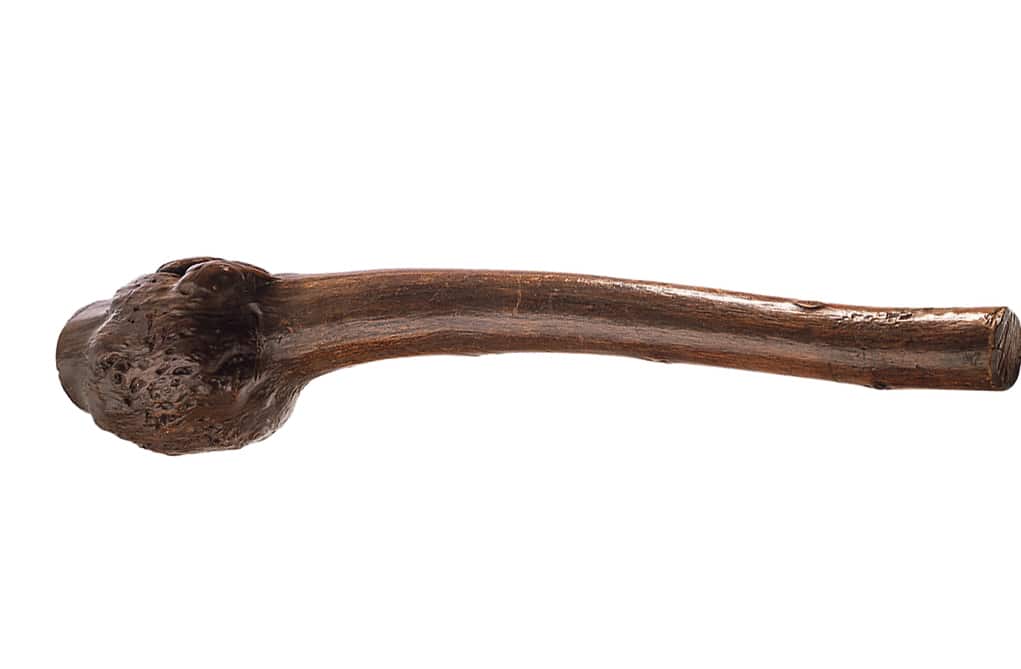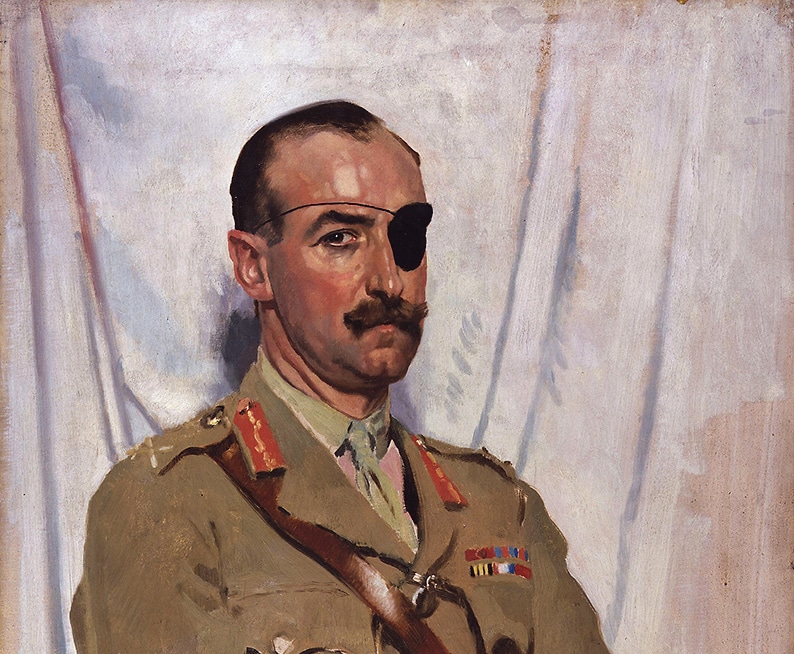
Single combat was a high point of many of the old heroic stories in the Fianna Cycle and Ulster cycle of Irish Mythology. In the Táin conflict between Ulster and Connacht, Cúchulainn fought and killed many of Queen Maeve’s warriors. Finally Cúchulainn was pitted against his closest friend, Ferdia, who had joined the Connacht warriors. After three days of terrible fighting Cúchulainn finally defeated his friend and wept tears of sorrow.
From the seventeenth century onwards, heroism in combat came to be expressed by the native Irish population by faction fighting. These contests usually took place at fairs and places of assembly, and involved a large crowd wielding blackthorn sticks or wattles about three feet long with a hard knob at the end. It was similar to a duel with swords, with the stick being used for defence as well as attack.
The origins of the factions are impossible to trace but they seem to have been a tangle of local loyalties and family feuds. For example, on the afternoon of a fair day, when most of the business was done and, usually some alcohol consumed, a few leading figures belonging to rival factions, would begin to taunt each other. Insults would be traded, leading to a clash in which increasing numbers of followers would become involved. Terrible injuries, and sometimes even deaths, would occur, and inevitably the losing side would challenge the visitors to fight again on the next fair day. In 1802 a faction fight between the O’Callaghan family and a branch of the O’Donovan Scairte took place in the townland of Cooladereen, east of the village of Leap in West Cork. One man died of his injuries; in folklore it is still remembered as ‘The Battle of Cooladerreen’. Factions had their ritual challenges, their own mocking-songs on their opponents, and even their own battle cries, like ‘Fág an Bealach’, meaning ‘clear the way’.
Just as pointless was the common practice among Anglo-Irish gentry of duelling with pistols. The actual pistols owned by celebrated duellists were sometimes given nicknames – all of which suggested sudden death – such as ‘Bás gan Sagart’ (Death without a priest), ‘Súth an Deataigh (Soot of Smoke) or ‘Crochaire an Chorda (Hangman with a Cord). Some families were said to have their own hereditary set of pistols handed down from one generation to the next. Also, sets of pistols used to be kept for the convenience of guests, ready to be used if they were needed. In such a case, a gentleman had a drunken quarrel with another and there was a challenge to a duel. Before retiring to sleep he would leave the order: ‘Pistols for two, and breakfast for one’.
Those who were fond of duelling were known as ‘fire-eaters’. One of the most famous was a Clare man, Seán Buí Mac Conmara (c 1780-1836), who acted as a second for Daniel O’Connell in his famous duel in 1815. He was known in English as ‘Fireball’ Mac Namara. He was said to have fought no less than forty-five successful contests and, like many expert marksmen, could shoot an apple off the head of a person at quite a distance. He had an estate in Co. Clare and, according to legend, he lost all his property at card-playing, whereupon, he went to Dublin to try his fortune there. He had one good suit of clothes left and he put it on and went to a great ball, at which he saw a man insulting a noble young lady. With drawn sword, Fireball challenged the man, who imprudently trod on Fireball’s shoes as a sign that he was accepting the challenge. In the ensuing fight, Fireball killed him, and then left in a hurry lest he be apprehended. The young lady, however, had fallen in love with the dashing stranger, and she enquired after him all over Ireland. Eventually she arrived at Burren Head, Co. Clare, where he was hunting. They married and lived happily together, she using her money to restock his estate with cattle.
Sometime later, she read in a newspaper that her elderly father was challenged to a duel in England by an expert gunman, who was a cousin of the man slain in Dublin by Fireball, and was thirsting for revenge. Fireball travelled to England hurriedly and arrived on the field as the opponent was complaining ‘that the cowardly old beggar’ had not come out yet. ‘Well’ said Fireball, ‘why not excuse the poor old man?’ The duellist reacted angrily. ‘One would think’, he snapped, ‘that you were going to take his place!’ ‘On the spot’, said Fireball. He had been forbidden by law to give a challenge but could accept one, so they squared up to each other. The challenger had the first shot, but missed. Fireball advised him to withdraw, but this request was ignored and Fireball shot at him with devastating accuracy. Fireball left the field immediately, and soon met his wife’s parents coming sorrowfully to their downfall, as they thought. ‘The most generous lord to the poor in England is going to his death today’, moaned the old lady, ‘and all because of a disobedient daughter in Ireland’. ‘Not so’ said Fireball, ‘the business is already completed!’ They did not believe him so he returned to Ireland. When they arrived in the field, however, they saw for themselves what had happened and they surmised that the stranger they had met was none other than their errant son-in-law. They sent messengers to search the length and breadth of Ireland until they discovered where he lived at Burren Head. Every year afterwards the kindly old English lord sent nine barrels of gold to the young couple.
All kinds of implements were used in faction fighting and usually large numbers were engaged on both sides. Women aided. Wherever the people were wont to congregate, advantage of the gathering was taken for the faction fight. Even the Mass on Sunday helped to gather the faction fighters, whilst the women brought with them the weapons hidden under their cloaks. In the neighbourhood of Leap there were two opposing clans – the O’Callaghans and the Scairtes. The faction fight of Cooladreen, a townland near Leap, which is since known as the ‘Battle of Cooladerreen’ was fought by two clans already mentioned.
On Stephen’s Day 1802, the Wren men of both clans set out early. Each consisted of over twenty men. They both went in all haste towards O’Donovan of Bawnlahan. He was a retired officer and he always gave a guinea to the first Wren men arriving. O’Callaghans were the first to arrive and received the guinea. On their way from the house they met the Scairtes and tit for tat started a faction fight for that day. They fought with stick, stones and anything else they could lay their hands on. A Callaghan struck a Scairte with a stone. A Riabhach, who always supported the Scairtes, took the same stone and with a deadly aim struck the Callaghan who fired it and severely cut him. The fight now continued south through Myross until they came to the sea at ‘Tráig na mBó’. Here they fought around the shore. Many became terrified and they sent for the priest. He arrived on horseback and he had the greatest difficulty in separating them. He only succeeded by calling to his aid the Myross folk who carried one side in their boats to the opposite side of the harbour – Prison Cove.
The Mass rock is still to be seen there where the congregation gathered on Sunday to hear Mass. When the church was built in Ballyhiloe, near Leap, Mass was no longer celebrated in Cooladreen but great crowds frequented the place on Sunday and held a pattern there and as a popular place it was chosen for the Battle of Cooladreen.
Great crowds from both sides prepared for battle. They went from wood to wood to cut some heavy sticks. Others among them dressed the sticks and, on the appointed day, both sides repaired early towards Cooladerreen. The Callaghans assembled at Connonagh Bridge.
A number of them on their way to the bridge passed by the Church at Ballyhiloe. The famous priest, Father John Power, was at the gate. He advised them to return home. They refused to do so and Father John Power, getting angry, passed some sarcastic remark about the white stockings they were wearing and someone in the Callaghan bunch stated that they had as much right to wear white stockings as his brothers who were also faction fighters. He then and there told them that they would regret not taking his advice on that day.
The women accompanied both clans to the battlefield. The battle started and continued during the day. Women shouted themselves hoarse in urging their side on to battle. The Scairtes were in retreat and the battle swayed northwards to the bog at the eastern end of Corran Lake. Here a Callaghan was knocked with a stone and a Scairte close by ran towards her husband and drank the blood as it flowed from the wound. This woman soon afterwards gave birth to a child whose face bore a remarkable bloodmark.
The Callaghans now began to retreat towards the Mall school closely pursued by the Scairtes. The Callaghans tried to get over the fence directly to the north of the school where they would have suffered severely. Probably the loss of many lives would have occurred were it not for the late John Williamson of Knockskeagh who lived at the Mall. He stood on the fence with a gun and threatened to shoot the first Scairte who tried to get over the fence. This gave the Callaghans an opportunity of retreating towards Tullig, round to Cashel and down to Connonagh pillaging the latter place on their arrival.



